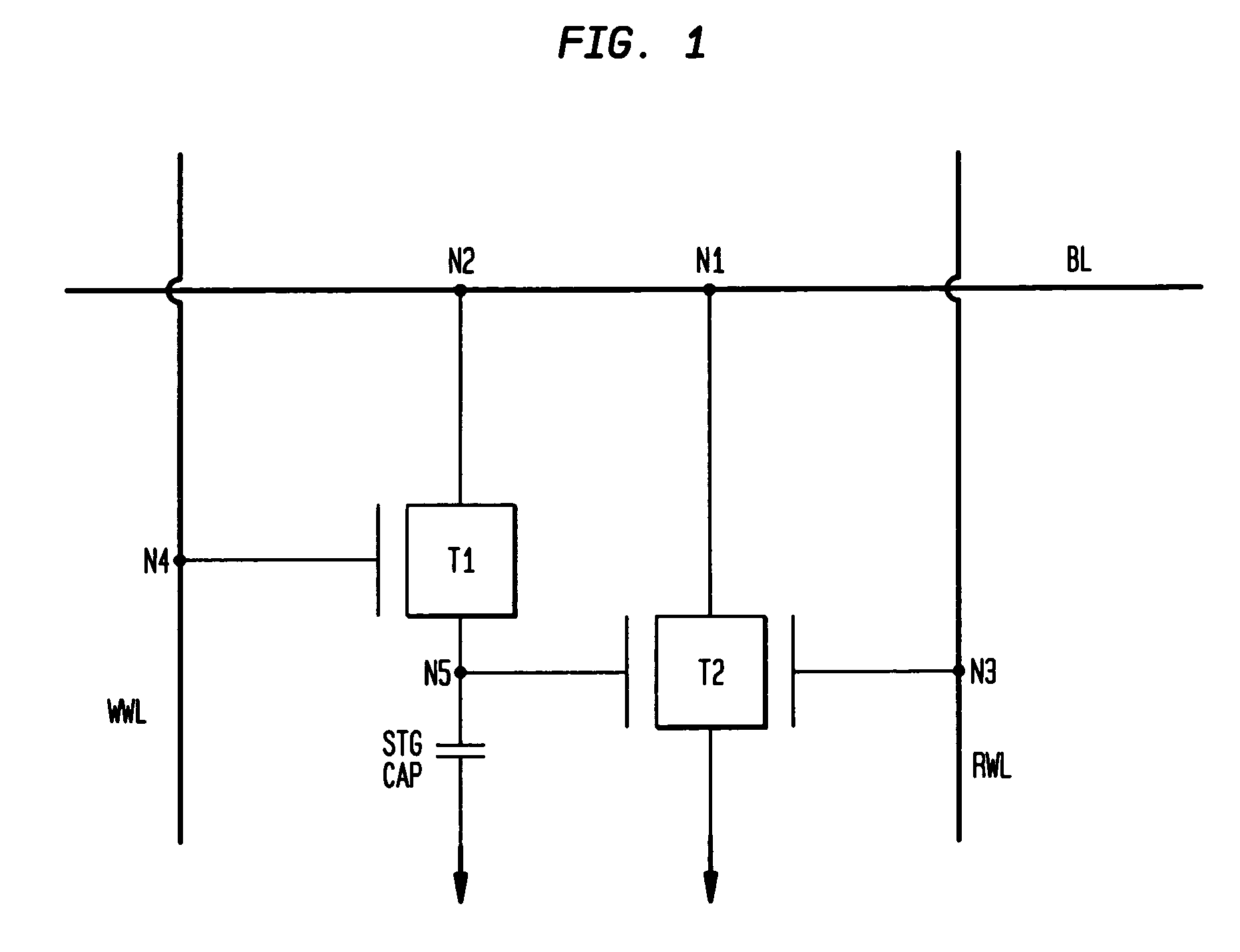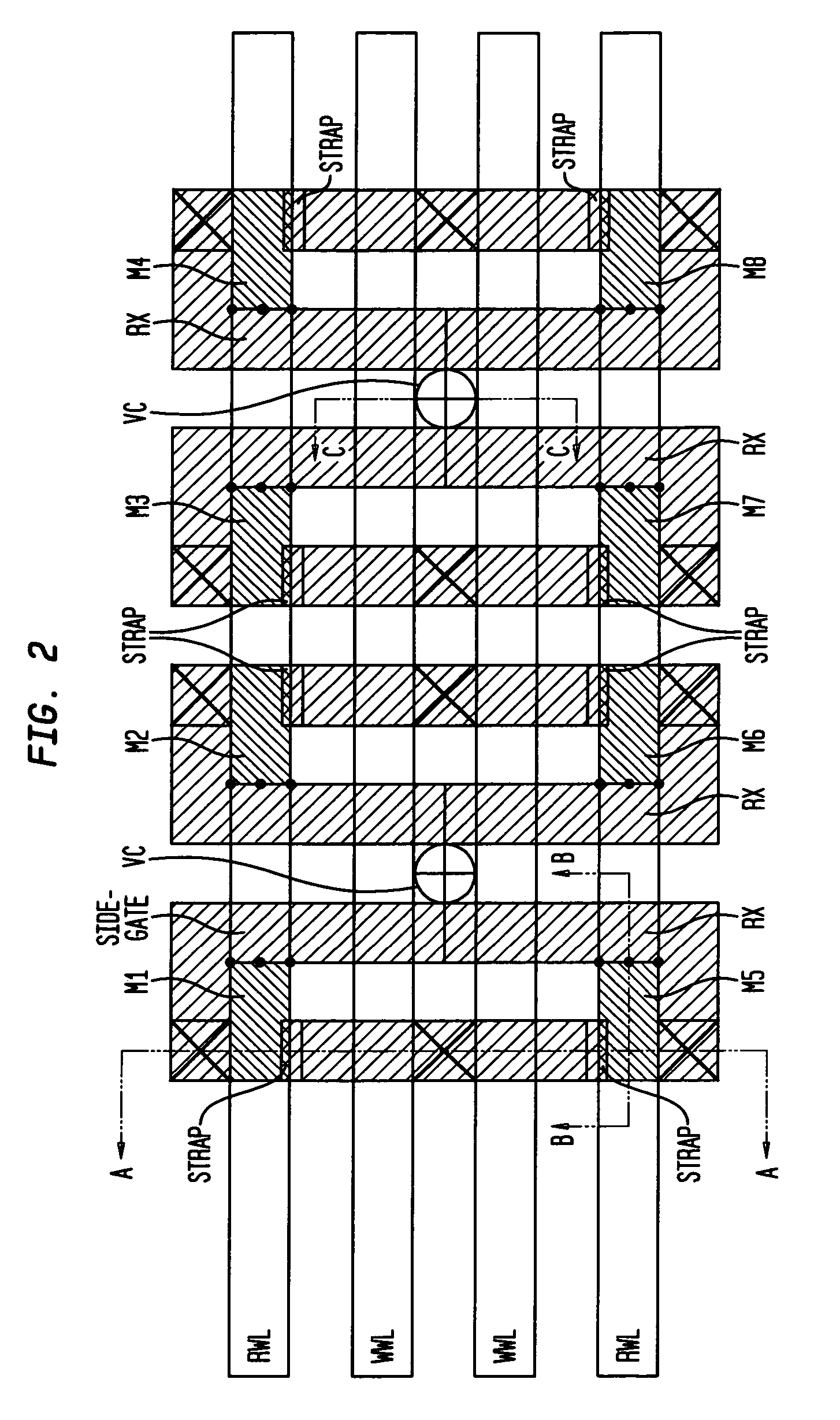Dual port gain cell with side and top gated read transistor
a gain cell and side gate technology, applied in the direction of transistors, semiconductor devices, electrical apparatus, etc., can solve the problems of increasing process complexity, sram cell size, and current advances in microprocessor performance outpacing the performance of dram,
- Summary
- Abstract
- Description
- Claims
- Application Information
AI Technical Summary
Benefits of technology
Problems solved by technology
Method used
Image
Examples
first embodiment
[0041]Reference is first made to FIG. 1 which shows a schematic representation of a 2T / 1C gain cell with a double gated read device in accordance with the present invention. It is emphasized that in the illustrated gain cell a transistor T2 having two gates is used. Specifically, T2 includes a side-gate that is connected to the storage node of the capacitor (STG CAP) and a top gate which is connected to the read wordline (RWL). In addition to T2, there is also shown T1, which is the write transistor of the cell. It is observed that T1 is a conventional planar MOSFET. In the drawings, BL refers to a common bitline in which T1 and T2 are both in connection with, and WWL refers to the write wordline which is in connection with the gate of T1.
[0042]In the cell shown in FIG. 1, a “1” or “0” is written to the storage capacitor, STG CAP, by raising the write wordline (WWL) and transferring charge between the bitline (BL) and the storage capacitor. The node of the storage capacitor serves a...
second embodiment
[0080]FIG. 20 is a schematic of the inventive gain cell of the present invention. Note that in the inventive gain cell shown in FIG. 20 the double-gated transistor T2 is also used. As indicated above, T2 includes two gates: a side-gate connected to the storage node of the storage trench capacitor STG CAP and a top gate connected to the RWL. This design is dual ported since a write operation, utilizing WWL and WBL, may occur simultaneously with a read, using RWL and RBL, for access. N1 . . . N5 are also shown in FIG. 20.
[0081]T1 is the write transistor and is a conventional MOSFET. A “1” or “0” is written to the storage capacitor by raising the write wordline (WWL) and transferring charge between the write bitline (WBL) and the storage capacitor. The node of the storage capacitor serves as one of the two gates of the read MOSFET T2. In this embodiment of the present invention, the node N5 gating the sidewall of T2 is integrated with the storage capacitor (STG CAP) and forms a compact...
PUM
 Login to View More
Login to View More Abstract
Description
Claims
Application Information
 Login to View More
Login to View More - R&D
- Intellectual Property
- Life Sciences
- Materials
- Tech Scout
- Unparalleled Data Quality
- Higher Quality Content
- 60% Fewer Hallucinations
Browse by: Latest US Patents, China's latest patents, Technical Efficacy Thesaurus, Application Domain, Technology Topic, Popular Technical Reports.
© 2025 PatSnap. All rights reserved.Legal|Privacy policy|Modern Slavery Act Transparency Statement|Sitemap|About US| Contact US: help@patsnap.com



